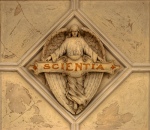Deep-sea ecosystems do not receive enough light from the sun to fuel photosynthesis and inject energy into the food chain. Therefore, the myriad creatures inhabiting the deep subsist on either geo-chemical phenomena, such as hydrothermal vents and cold seeps, or food-fall from the surface. The epic TV documentaries “Blue Planet” and “Planet Earth” have displayed classic examples of this by sinking whales and fish and recording the subsequent feeding frenzies.
Recently, researchers have begun to describe deep-sea ecosystems based on trees that fall into the ocean and eventually sink. Mollusks are the most common organisms associated with these wood falls, followed by arthropods. The crustaceans found on these wood falls include isopods, amphipods, and decapods. The decapod order consists of crabs, lobsters, and some shrimp. One prominent decapod found in the wood-falls is the squat lobster, Munidopsis andamanica.
Squat lobsters are actually more closely related to hermit crabs than the large, delicious, true lobsters that most people are familiar with. They lead diverse lifestyles in a wide variety of marine habitats. Typically, squat lobsters are generalist scavengers. However, M. andamanica has apparently evolved specializations for feeding on wood. These adaptations include claws and mouthparts ideal for tearing off and processing strips of wood tissue. In addition, the guts of these animals contain bacterial colonies that may assist in digesting plant tissue.
 Partially digested plant xylem and symbiotic bacteria from the gut of M. andamanica.
Partially digested plant xylem and symbiotic bacteria from the gut of M. andamanica.
These squat lobsters play an important role in wood fall ecosystems. Their ability to digest plant xylem tissue, producing nutrient-rich waste, injects useful energy into the environment. Furthermore, the discovery of wood fall ecological communities supports the stepping stone hypothesis of deep-sea colonization. It is thought that animals found in all habitats of the deep sea evolved in shallower waters and invaded the deep gradually by hopping from one sunken nutrient mass to another: Eventually reaching the deepest extremes of the oceans.
References:
Hoyoux, C. et al., 2009. Wood-based diet and gut microflora of a galatheid crab associated with Pacific deep-sea wood falls. Marine Biology, 156(12), 2421-2439.

















Hi i am kavin, its my first time to commenting anywhere,
when i read this paragraph i thought i could also make comment due to this sensible paragraph.
Wow, awesome blog format! How lengthy have you been running a blog for?
you made blogging glance easy. The entire look of your web site is fantastic, as well as the content material!
It’s amazing to pay a quick visit this web page and reading the views of all mates regarding this post, while I am also eager of getting know-how.
Excellent beat ! I wish to apprentice at the
same time as you amend your site, how can i subscribe for a weblog website?
The account helped me a applicable deal.
I had been a little bit familiar of this your broadcast offered brilliant clear
idea
Simply wish to say your article is as astounding.
The clarity in your post is simply great and i can assume you are an expert on this subject.
Fine with your permission allow me to grab your feed to keep updated with forthcoming post.
Thanks a million and please continue the rewarding work.
This excellent website definitely has all the info
I wanted about this subject and didn’t know who to ask.
hello!,I like your writing so so much! percentage we keep in touch more about
your article on AOL? I require an expert in this area to unravel my problem.
Maybe that’s you! Having a look ahead to peer you.
Thanks for sharing your thoughts on triactol bust.
Regards